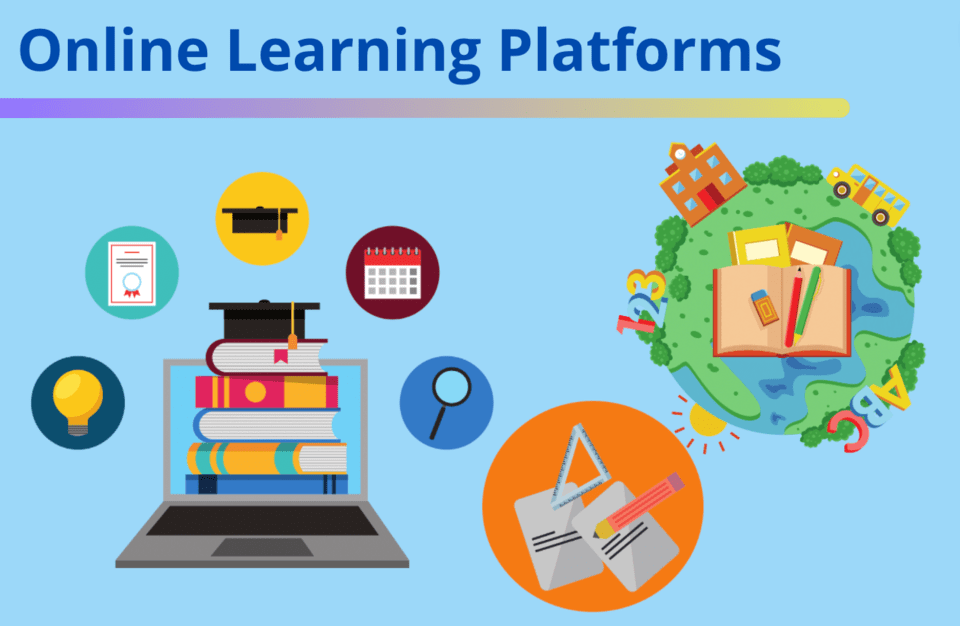The Very Best Games for Education and Study for Children and Kids
The Very Best Games for Education and Study for Children and Kids
Blog Article
The Role of E-Learning in Shaping the Future of Education And Learning for Kids
As typical education and learning systems advance, the integration of e-learning is emerging as a critical force in shaping the future of education for children. Understanding the complete extent of this effect needs taking a look at the complex ramifications of e-learning's function in contemporary education systems.
Interactive Discovering Atmospheres
In the realm of e-learning for children, interactive knowing environments have become pivotal tools in enhancing instructional end results. Education and study for children and kids. These electronic systems integrate multimedia aspects such as video clips, computer animations, and gamified exercises to create a dynamic and engaging instructional experience. Notably, they transform passive knowing into an energetic process, thus cultivating far better retention and understanding

Online classrooms and conversation forums make it possible for pupils to share concepts, ask concerns, and work together on jobs, duplicating the advantages of traditional class communications. Interactive knowing settings are not just additional academic tools yet crucial components that enhance the discovering ecosystem for youngsters.
Individualized Education Paths
Harnessing the possibility of individualized education courses changes the discovering experience for children by dealing with their special needs and capacities. Standard one-size-fits-all approaches commonly stop working to address specific knowing voids and staminas. E-learning platforms, nevertheless, can utilize sophisticated algorithms and data analytics to customize academic web content, speed, and approaches to every youngster's certain demands. This modification promotes an extra effective and appealing learning setting, enabling trainees to thrive at their own rate.
Customized education and learning paths also equip teachers by supplying in-depth understandings into trainee progression. Educators can recognize locations where a child may interfere and struggle with targeted assistance. Conversely, students mastering particular subjects can advance without being kept back by a standardized curriculum. This adaptability not only enhances academic performance but also boosts trainee confidence and motivation.
In addition, e-learning systems can incorporate diverse learning sources, such as interactive simulations, multimedia material, and gamified lessons, to line up with different learning designs. By suiting visual, auditory, and kinesthetic students, customized education paths ensure that each youngster gets the most reliable training methods. Education and study for children and kids. Hence, leveraging tailored education and learning paths via e-learning contributes in producing a future-proof, comprehensive, and effective educational landscape for youngsters
Enhancing Availability
While the advantages of customized education and learning paths are substantial, improving accessibility is just as critical to guarantee that e-learning systems can get to all children, regardless of their socio-economic background or geographic area. Digital addition is important to connect the academic divide and provide equitable understanding chances. This can be attained through the advancement of inexpensive, high-quality e-learning options that are available on diverse gadgets, consisting of smart devices, tablet computers, and computer systems.
In addition, partnerships between federal governments, non-profits, and economic sectors can assist in the circulation of necessary innovation and internet accessibility to underserved areas. Such collaborations can also support the development of localized web content in different languages, making sure social importance and comprehension.
Moreover, adaptive knowing innovations can be tailored to fit youngsters with disabilities, providing features like text-to-speech, adjustable text sizes, and interactive components that satisfy various learning needs. These developments not only democratize education but also empower students by offering tools that deal with individual challenges.
Developing Crucial Skills
With ease of access enhancements in place, the following vital aspect to address is the development of critical abilities amongst young learners. E-learning platforms supply an unique opportunity to grow an array of necessary skills that conventional class setups may struggle to why not try these out deal with thoroughly. Among these are essential reasoning, problem-solving, and electronic proficiency, which are increasingly indispensable in the modern-day globe.

Furthermore, e-learning systems frequently include collaborative devices like discussion forums, team jobs, and peer testimonials, which foster interaction and synergy skills. These platforms additionally expose students to a large range of electronic tools and resources, boosting their digital literacy. As pupils browse various software, applications, and on the internet sources, they become skilled at utilizing innovation properly and responsibly.
Basically, e-learning not just supplements conventional education and learning yet also gears up trainees with the essential skills required to flourish in a increasingly digital and interconnected world.
Overcoming Geographical Barriers
The development of e-learning has actually dramatically mitigated the geographical obstacles that generally impeded accessibility to top quality education and learning. Before the electronic change, pupils in impoverished or remote locations frequently faced limited educational resources and possibilities. E-learning systems currently connect this space, providing universal access to top notch academic material despite location.
Through online courses, digital collections, and interactive tools, pupils from varied geographical backgrounds can engage with the same educational program used in municipal colleges. This democratization of education and learning makes sure that every child, regardless of their physical area, has the prospective to achieve scholastic success. Moreover, e-learning helps with access to specialized topics and professional instructors that might not be offered locally.
Moreover, e-learning allows real-time collaboration between pupils and educators from different parts of the world, cultivating an international learning more neighborhood. The duty of e-learning extends beyond simple benefit; it is a transformative tool that redefines access in education.
Conclusion
E-learning is essential in shaping the future of education and learning for children by creating interactive and individualized learning environments. It enhances accessibility, fosters critical skill growth, and conquers geographical barriers, making sure all trainees get to top quality educational sources. This electronic change outfits students with the devices required for scholastic and professional success, advertising inclusivity and cooperation on a worldwide range. E-learning, as a result, stands as a foundation in the development of modern education and learning.
As conventional education systems advance, the combination of e-learning is emerging as a pivotal pressure in shaping the future of education and learning for youngsters. Therefore, leveraging personalized education and learning paths via e-learning is critical in creating a future-proof, comprehensive, and effective educational landscape for children.
While my response the benefits of personalized education and learning courses are substantial, boosting availability is similarly vital to make sure that e-learning systems can get to all youngsters, regardless of their socio-economic background or geographic area. The duty of e-learning prolongs beyond plain ease; it is a transformative device that redefines availability in education.
E-learning is pivotal in forming the future of education and learning for children by creating tailored and interactive understanding environments.
Report this page